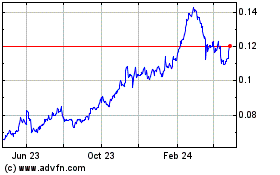Solana proposal to cut inflation rate by up to 80% fails to pass
March 13 2025 - 9:51PM
Cointelegraph


A proposal to dramatically change Solana’s inflation system has
been rejected by stakeholders but is being hailed as a victory for
the network’s governance process.
“Even though our proposal was technically defeated by the vote,
this was a major victory for the Solana ecosystem and its
governance process,” commented Multicoin
Capital co-founder Tushar Jain on March 14.
Around 74% of the staked supply voted on proposal SIMD-228
across 910 validators, but just 43.6% voted in favor of it, with
27.4% voting against it and 3.3% abstaining,
according to Dune
Analytics. It needed 66.67% approval from participating votes
to pass and only received 61.4%.
Jain added that this was the biggest crypto governance vote
ever, by both the number of participants and the participating
market cap, of any ecosystem, chain or network.
“This was a meaningful scaling stress test — a social,
rather than technical, stress test — and the network passed despite
a wide stratification of diverging opinions and
interests.”
“Solana SIMD-228 voter turnout was higher than every US
presidential election in the last 100 years,”
claimed the team behind
Solana’s X account.

SIMD-228 final vote count. Source:
Dune
SIMD-228 is a proposal to change Solana’s
(SOL) inflation system from a
fixed schedule to a dynamic, market-based model. Instead of a
pre-set decrease in inflation, this new system would dynamically
adjust based on staking participation.
Currently, supply inflation begins at 8% annually, decreasing by
15% per year until it reaches 1.5%. The new mechanism may have
reduced it by as much as 80%, according to some
estimates. Solana
inflation is currently 4.66%, and just 3% of the total supply is
staked, according to Solana Compass.
However, such high inflation can increase selling pressure,
reduce SOL’s price and discourage network use. The proposed system
would have adjusted inflation based on staking levels to stabilize
the network and minimize unnecessary token issuance.

Solana’s current inflation schedule. Source:
Helius
Benefits would have included increased network security due to
dynamically increasing inflation if staking participation drops,
reaction to real-time staking levels rather than following a fixed,
inflexible schedule, and encouraging more active use of SOL in
DeFi, according to Solana developer tools
provider Helius.
However, lower inflation could have made it harder for smaller
validators to stay profitable, the proposed model increased
complexity, and unexpected shifts in staking rates might have led
to instability.
Related: Solana price bottom below $100? Death cross
hints at 30% drop
There was little reaction in SOL prices, with the asset dipping
1.5% on the day to just below $125 at the time of
writing.
However, it has tanked by
almost 60% in just two months as the memecoin bubble burst. Solana
network revenue has also slumped over
90% since it was primarily used to mint and trade
memecoins.
Magazine: Mystery celeb memecoin scam factory, HK firm
dumps Bitcoin: Asia Express
...
Continue reading Solana proposal to cut inflation
rate by up to 80% fails to pass
The post
Solana proposal to cut inflation rate by up to 80%
fails to pass appeared first on
CoinTelegraph.
TRON (COIN:TRXUSD)
Historical Stock Chart
From Mar 2025 to Apr 2025

TRON (COIN:TRXUSD)
Historical Stock Chart
From Apr 2024 to Apr 2025
